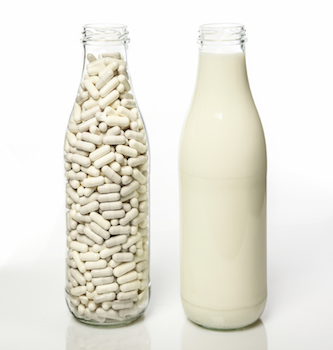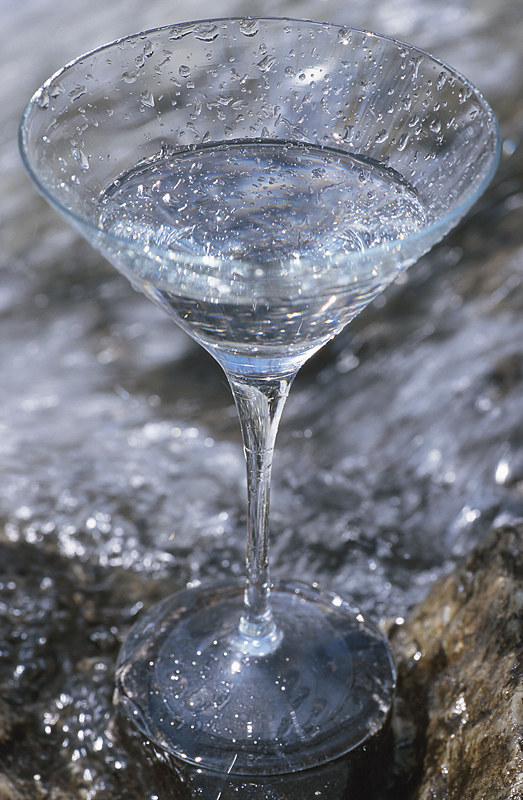Stay Informed
Popular Articles
- Hiatal Hernia: Hidden Cause of Chronic Illness
- Small Intestinal Bacterial Overgrowth (SIBO)
- Applied Lymphology: Unlocking the Secret to Pain Relief
- An Introduction to Constitutional Iridology
- The Low Down on Liver Detoxification
- An Energetic and Emotional Approach to Cancer
- Fat Facts
- Marrow in the Bones
- Blood Type and Nutrition
- Cardiac Herbs: Beyond Hawthorn
Quick Search
The School of Modern Herbal Medicine




Getting the Minerals Your Bones Need
- 7/28/2010
- Categorized in: Nutrition, Specific Health Problems
 This is part three of a four-part article.
This is part three of a four-part article.
This brings me to the dairy issue. Dairy products are rich sources of calcium, so why do the countries that consume the most dairy foods also have higher incidences of osteoporosis-related fractures? Asian cultures, which use a minimal amount of dairy have some of the lowest incidences of osteoporosis in the world. By the way Asians don’t use calcium supplements or fortify food with calcium, so why isn’t osteoporosis rampant in China and Japan?
The answer is obvious if you just think about it. How do cows get so much calcium in their milk? Where does all that calcium come from? It comes from the cow’s diet, of course. And what do cows eat? They eat green foods like alfalfa, various grasses and other green leafy plants. What do Asians eat more of than we do—green leafy vegetables. The best foods for getting calcium to build strong healthy bones are Swiss chard, beet greens, turnip greens, collards and even broccoli.
It’s not that dairy foods are bad, per se. Weston Price found tribes in Africa that lived primarily on milk and blood from their cattle. These tribesmen were completely free of cavities and totally immune to all diseases like malaria and yellow fever. Their animals weren’t being fed hormones, antibiotics and commercial feed; they were grazing on green plants. Also, the milk these animals produced wasn’t pasteurized, homogenized, skimmed and “fortified.
So, yes, if you can get fresh raw milk from “grass fed” cows that have been grazing on good pasture, it would be great for your bones. However, I would suggest that it wouldn’t just be because of calcium in the milk. Such milk would contain the other trace minerals and nutrients needed for strong bones and good general health.
Restocking the Storehouse
So, let’s get back to that phrase, “marrow in the bones.” By now, it should be very clear that we need an abundant supply of minerals in the diet to be healthy. The health of the bones and teeth is the indicator of whether we are being adequately nourished, and particularly if we are getting enough minerals. If you (like me) have had cavities, impacted wisdom teeth and problems with gum disease, then it’s fairly safe to say that your nutrition (like mine) has been compromised.
Fortunately, bones aren’t static, so if we start improving our nutrition today our bones will gradually become stronger. So, how can we accomplish this?
Well, for starters, we should consume more nutritionally dense foods. Purchase quality fruits and vegetables (which may mean buying organic, but may also mean locally-grown). Better yet, have a small garden, use all your kitchen scraps to make compost and grow some of your own nutritionally-dense produce. Besides minerals, it takes vitamins to build healthy bones. Vitamin D3 for instance is essential for getting calcium into the bones and most people are deficient in it. B-Complex vitamins and Vitamin C are also utlized in bone creation. Protein is also needed for bone formation, so low protein diets may cause problems with bone.
Mineral Water
 Another good source of minerals is mineral-rich water. People around the world have sought out mineral springs for healing. Mineral water (that is, water with a high content of minerals) has a healing effect on the body because it provides the “dust of the earth” our bones and our bodies need in a form that can be assimilated. A high quality colloidal mineral supplement is essentially artificially made mineral water. I find it interesting that Sally Fallon, in her book Nourishing Traditions, criticizes the use of colloidal mineral supplements and then basically recommends making your own by putting a good quality clay in water, stirring it up and then letting the clay settle and drinking the water off the top. That’s basically how colloidal minerals are made.
Another good source of minerals is mineral-rich water. People around the world have sought out mineral springs for healing. Mineral water (that is, water with a high content of minerals) has a healing effect on the body because it provides the “dust of the earth” our bones and our bodies need in a form that can be assimilated. A high quality colloidal mineral supplement is essentially artificially made mineral water. I find it interesting that Sally Fallon, in her book Nourishing Traditions, criticizes the use of colloidal mineral supplements and then basically recommends making your own by putting a good quality clay in water, stirring it up and then letting the clay settle and drinking the water off the top. That’s basically how colloidal minerals are made.
One starts with a high quality clay from an ancient seabed that is loaded with minerals. When water leeches slowly across these deposits and comes out in a spring, you have a mineral spring. To make colloidal minerals, you simply mine the deposit and percolate water through the clay until you get a concentrated mineral water.
Studies show that people who drink mineral-rich water have healthier bones and teeth. Both Weston Price and Dr. Bernard Jensen found that cultures that drank mineral rich water (such as glacial runoff) had better bones and healthier bodies.
Unfortunately, much of today’s water is also contaminated with chemicals, so some kind of treatment or filtration is desirable to remove the contaminants. Unfortunately, this also removes many of the minerals. This can easily be overcome by drinking a colloidal mineral product. I also use colloidal minerals in my garden for healthier plants.
Herbs for the Bones
Herbal supplements are another great way to get trace minerals into the diet. Over the years, I have found mineral-rich herbs to be more effective at restoring tissue levels of minerals than any other approach I have taken. HSN-W is one of my favorite remedies here. It also happens to be one of Kim Balas’ favorite remedies, too. We tend to oversimplify this remedy by thinking of it as a silica supplement, but it’s much more than that. It contains herbs rich in calcium and other trace minerals, and is very good for joints, bones, connective tissue and the nervous system.
HSN-W was one of the primary remedies I put my mother on for her arthritis. I also gave her Joint Support (back then it was known as ART-A). I didn’t give her a calcium supplement, just these herbal remedies. At age 82, she slipped on the stairs and fell, chipping a bone in her knee, which required surgery. The doctor said she had the bones of a 50-year-old. I assure you that this wasn’t from taking calcium supplements. It was from taking herbs.
My favorite formula for trace minerals is a blend created by my midwife friend Joan Patton. She called it Herbal Calcium; I called it Herbal Minerals. It contains alfalfa, nettles, oatstraw, horsetail and red raspberry. I’ve seen these herbs help build healthier teeth, joints, bones and connective tissue as well as improve people’s overall health and immune system function. You can easily blend these herbs and brew them into a tea or you can learn how to make them into a glycerite in my Herbal Preparations and Applications course or by purchasing The Modern Herbal Dispensatory, which will be released in November 2016.
So, what have we learned so far? Well, we’ve discussed that minerals are vital to health and that the bones are the mineral storehouse of the body. If mineral levels are low, then bones, joints and teeth will have problems, which will also relate to overall health problems due to a lack of minerals. We have also seen that nutritionally dense foods, mineral water (including colloidal minerals) and mineral rich herbs are the keys to rebuilding adequate mineral reserves.
Page four continues our discussion of nutrients for healhty bones...
